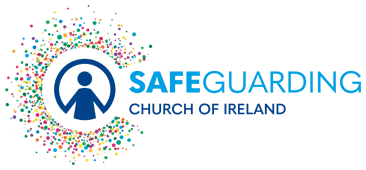NI Adult Safeguarding
SECTION D: Definitions
The risk of harm occurs in all communities irrespective of age, gender or socio-economic status. Many adults at risk regularly come into contact with our church family and community whether that be through Sunday worship, pastoral visiting, or organisations providing activities for both children and families and individual adults. There are times when those in ministry meet adults at times of crisis and trauma or sometimes they recognise that something is not quite as it appears. A supportive conversation may enable some elements of disclosure of domestic abuse; financial abuse; emotional or other forms of harm. Those in ministry are well placed to support adults at risk and empower them to make choices about how to keep themselves safe by minimising their own exposure to the risks that are present in their lives.
Therefore, it is important that those in ministry understand what constitutes abuse of adults who are at risk of harm. By understanding the nature of abuse and recognizing possible indicators of harm, those in ministry will be in a more informed position to support and guide individuals to seek advice and information to change their circumstances should they wish to do so. While statutory services provide necessary protection responses, community and voluntary sector organisations are also well placed to provide specialist supports to alleged victims of harm and abuse. Likewise, it is important to recognise the value of the spiritual counselling the Church
can provide to adults at risk or adults in need of protection in the adult safeguarding process.
Adult Safeguarding: Prevention and Protection in Partnership Policy (NI) (2015) has established the following definitions for practice in the statutory, independent and community and voluntary sectors.
Definition of Abuse
Abuse may be defined as a single or repeated act, or lack of appropriate action, occurring within any relationship where there is an expectation of trust, which causes harm or distress to another individual or violates their human or civil rights. Abuse is the misuse of power and control that one person has over another. It can involve direct and indirect contact and can include online abuse.
The main forms of abuse are:
Physical Abuse
Physical abuse is the use of physical force or mistreatment of one person by another which may or may not result in actual physical injury. This may include hitting, pushing, rough handling, exposure to heat or cold, force feeding, improper administration of medication, denial of treatment, misuse or illegal use of restraint and deprivation of liberty. Female genital mutilation (FGM) is considered a form of physical AND sexual abuse.
Sexual Violence and Abuse
Sexual abuse is any behaviour (physical, psychological, verbal, virtual/online) perceived to be of a sexual nature which is controlling, coercive, exploitative, harmful, or unwanted that is inflicted on anyone (irrespective of age, ethnicity, religion, gender, gender identity, sexual orientation or any form of disability). Sexual violence and abuse can take many forms and may include non-contact sexual activities, such as indecent exposure, stalking, grooming, being made to look at or be involved in the production of sexually abusive material, or being made to watch sexual activities. It may involve physical contact, including but not limited to non-consensual penetrative sexual activities or non-penetrative sexual activities, such as intentional touching (known as groping). Sexual violence can be found across all sections of society, irrespective of gender, age, ability, religion, race, ethnicity, personal circumstances, financial background or sexual orientation.
Psychological/Emotional Abuse
Psychological/emotional abuse is behaviour that is psychologically harmful or inflicts mental distress by threat, humiliation or other verbal/non-verbal conduct. This may include threats, humiliation or ridicule, provoking fear of violence, shouting, yelling and swearing, blaming, controlling, intimidation and coercion.
Financial Abuse
Financial abuse is actual or attempted theft, fraud or burglary. It is the misappropriation or misuse of money, property, benefits, material goods or other asset transactions which the person did not or could not consent to, or which were invalidated by intimidation, coercion or deception. This may include exploitation, embezzlement, withholding pension or benefits, or pressure exerted around wills, property or inheritance.
Institutional Abuse
Institutional abuse is the mistreatment or neglect of an adult by a regime or individuals in settings which adults who may be at risk reside in or use. This can occur in any organisation. Institutional abuse may occur when the routines, systems and regimes result in poor standards of care, poor practice and behaviours, inflexible regimes and rigid routines which violate the dignity and human rights of the adults and place them at risk of harm. Institutional abuse may occur within a culture that denies, restricts or curtails privacy, dignity, choice and independence. It involves the collective failure of a service provider or an organisation to provide safe and appropriate services, and includes a failure to ensure that the necessary preventative and/or protective measures are in place.
Neglect
Neglect occurs when a person deliberately withholds, or fails to provide, appropriate and adequate care and support which is required by another adult. It may be through a lack of knowledge or awareness, or through a failure to take reasonable action given the information and facts available to them at the time. It may include physical neglect to the extent that health or well-being is impaired, administering too much or too little medication, failure to provide access to appropriate health or social care, withholding the necessities of life, such as adequate nutrition, heating or clothing, or failure to intervene in situations that are dangerous to the person concerned or to others, particularly when the person lacks the capacity to assess risk.
The Adult Safeguarding: Prevention and Protection in Partnership Policy (NI) (2015) does not include self-harm or self-neglect within the definition of an ‘adult in need of protection’. Each individual set of circumstances will require a professional Health and Social Care assessment to determine the appropriate response and consider if any underlying factors require a protection response. For example, self-harm may be the manifestation of harm which has been perpetrated by a third party and which the adult feels unable to disclose.
Exploitation
Exploitation is the deliberate maltreatment, manipulation or abuse of power and control over another person; to take advantage of another person or situation usually, but not always, for personal gain from using them as a commodity. It may manifest itself in many forms including slavery, servitude, forced or compulsory labour, domestic violence and abuse, sexual violence and abuse, or human trafficking.
This list of types of harmful conduct is neither exhaustive nor listed here in any order of priority. There are other indicators which should not be ignored. It is also possible that if a person is being harmed in one way, s/he may very well be experiencing harm in other ways.
Related Definitions
There are related definitions which interface with Adult Safeguarding, each of which have their own associated adult protection processes in place.
Domestic Violence and Abuse
Domestic violence or abuse is threatening, controlling, coercive behaviour, violence or abuse (psychological, virtual, physical, verbal, sexual, financial or emotional) inflicted on anyone (irrespective of age, ethnicity, religion, gender, gender identity, sexual orientation or any form of disability) by a current or former intimate partner or family member. Domestic violence and abuse is essentially a pattern of behaviour which is characterised by the exercise of control and the misuse of power by one person over another. It is usually frequent and persistent. It can include violence by a son, daughter, mother, father, husband, wife, life partner or any other person who has a close relationship with the victim. It occurs right across society, regardless of age, gender, race, ethnic or religious group, sexual orientation, wealth, disability or geography.
The response to any adult facing this situation will usually require a referral to specialist services such as Women’s Aid or the Men’s Advisory Project. In high risk cases a referral will also be made to the Multi-Agency Risk Assessment Conference (MARAC) process. Specialist services will then decide if the case needs to be referred to a HSC Trust for action under the safeguarding procedures. If in doubt, anyone with a concern can ring the Domestic and Sexual Violence helpline (0808 802 1414) to receive advice and guidance about how best to proceed.
Human Trafficking/Modern Slavery
Human trafficking/modern slavery involves the acquisition and movement of people by improper means, such as force, threat or deception, for the purposes of exploiting them. It can take many forms, such as domestic servitude, forced criminality, forced labour, sexual exploitation and organ harvesting. Victims of human trafficking/modern slavery can come from all walks of life; they can be male or female, children or adults, and they may come from migrant or indigenous communities.
The response to adults at risk experiencing human trafficking/modern slavery will always be to report the incident to the PSNI.
Hate Crime
Hate crime is any incident which constitutes a criminal offence perceived by the victim or any other person as being motivated by prejudice, discrimination or hate towards a person’s actual or perceived race, religious belief, sexual orientation, disability, political opinion or gender identity.
The response to adults at risk experiencing hate crime will usually be to report the incident to the Police Service.
Definition of an Adult at Risk of Harm
An ‘adult at risk of harm’ is a person aged 18 or over, whose exposure to harm through abuse, exploitation or neglect may be increased by their personal characteristics and/or life circumstances.
Personal characteristics may include, but are not limited to, age, disability, special educational needs, illness, mental or physical frailty or impairment of, or disturbance in, the functioning
of the mind or brain. Life circumstances may include, but are not limited to, isolation, socio-economic factors and environmental living conditions.
An adult can become an “adult at risk” at any time in their life and this is not necessarily permanent. This may be due to a permanent or temporary reduction in their physical, mental or emotional capacity brought about by life events, for example bereavement or previous abuse or trauma.
Definition of an Adult in Need of Protection
An ‘adult in need of protection’ is a person aged 18 or over, whose exposure to harm through abuse, exploitation or neglect may be increased by their:
a) Personal characteristics
and/or
b) Life circumstances
AND
c) who is unable to protect their own well-being, property, assets, rights or other interests;
AND
d) where the action or inaction of another person or persons is causing, or is likely to cause, him/her to be harmed.
In order to meet the definition of an ‘adult in need of protection’ either (A) or (B) must be present, in addition to both elements (C) and (D).
In most situations HSC Trusts will make decisions regarding the degree of risk and level of harm an adult may be facing and decide on the most appropriate action to take. If there is a clear and immediate risk of harm, where a crime is alleged or suspected, the matter should be referred directly to the PSNI or HSC Trust Adult Protection Gateway Service and caution should be taken not to touch or disturb possible forensic evidential material.

